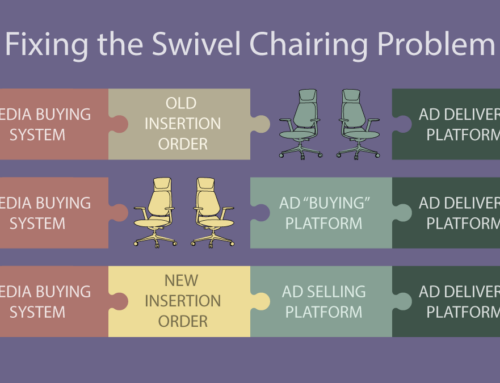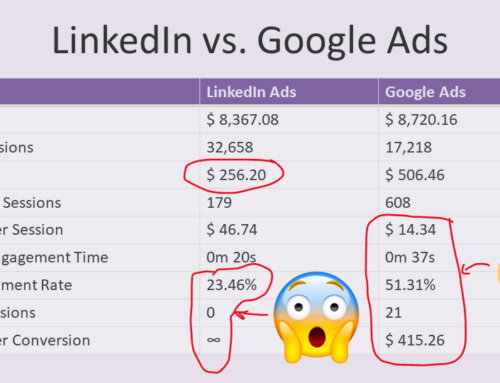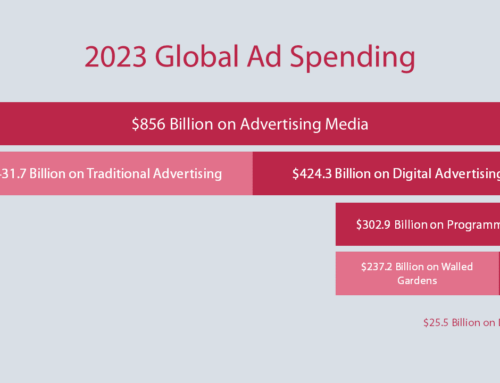A long time ago, I was selling highly premium banner ad inventory to major advertisers. Part of a larger media organization, our site had great consumer electronics content tailored to successful professional and amateur product enthusiasts. The thing we loved most was sponsorships and advertorials. We practically had a micro-agency inside our shop, and we produced amazing custom websites, contests, and branded content sections for our best clients. They loved our creative approach, subject matter expertise, and association with our amazing brand. They still capture this revenue today.
The next thing we loved was our homepage and index page banner inventory. We sold all of our premium inventory—mostly 728×90 and 300×250 banners—by hand, and realized very nice CPMs. Back then, we were getting CPMs upwards of $50, since we had an audience of high-spending B2B readers. I imagine that today, the same site is running lots of premium video and rich media, and getting CPMs in the high teens for their above-the fold inventory and pre-roll in their video player. I was on the site recently, and saw most of the same major advertisers running strong throughout the popular parts of the site. Today, a lot of this “transactional RFP” activity is being handled by programmatic direct technologies that include companies like NextMark, Centro, iSocket, and AdSlot, not to mention MediaOcean.
What about remnant? We really didn’t think about it much. Actually, realizing how worthless most of that below-the-fold and deep-paged inventory was, we ran house ads, or bundled lots of “value added ROS” impression together for our good customers. Those were simple days, when monetization was focused on having salespeople sell more—and pushing your editorial team to produce more content worthy of high CPM banner placements.
Come to think of it, it seems like not much has changed over the last 10 years, with the notable exception of publishers’ approach to remnant inventory. About five years ago, they found some ad tech folks to take 100% of it off their hands. Even though they didn’t get a lot of money for it, they figured it was okay, since they could focus on their premium inventory and sales relationships. In doing some of those early network deals, I wondered who the hell would want millions of below-the-fold banners and 468x90s, anyway? Boy, was I stupid. Close your eyes for a year or two, and a whole “Kawaja map” pops up.
Anyhow, we all know what happened next. Networks used data and technology to make the crap they were buying more relevant to advertisers (“audience targeting”), and the demand side—seeing CPMs drop from $17 to $7, played right along. Advertisers LOVE programmatic RTB buying. It puts them in the driver’s seat, lets them determine pricing, and also (thanks to “agency trading desks”) lets them enhance their shrinking margins with a media vigorish. Unfortunately, for publishers, it meant that a rising sea of audience targeting capability only lifted the agency and ad tech boats. Publishers were seeing CPMs decline, networks eat into overall ad spending, DSPs further devaluing inventory, and self-service platforms like Facebook siphon off more of the pie.
How do publishers get control back of their remnant inventory—and start to take their rightful ownership of audience targeting?
That has now become simple (well, it’s simple after some painful tech implementation). Data Management Platforms are the key for publishers looking to segment, target, and expand their audiences via lookalike modeling. They can leverage their clients’ first party data and their own to drive powerful audience-targeted campaigns right within their own domains, and start capturing real CPMs for their inventory rather than handing networks and SSPs the lion’s share of the advertising dollar. That is step number one, and any publisher with a significant amount of under-monetized inventory would be foolish to do otherwise. Why did Lotame switch from network to DMP years ago? Because they saw this coming. Now they help publishers power their own inventory and get back control. Understanding your audience—and having powerful insights to help your advertisers understand it—is the key to success. Right now, there are about a dozen DMPs that are highly effective for audience activation.
What is even more interesting to me is what a publisher can do after they start to understand audiences better. The really cool thing about DMPs is that they can enable a publisher to have their own type of “trading desk.” Before we go wild and start taking about “PTDs” or PTSDs or whatever, let me explain.
If I am BigSportsSite, for example, and I am the world’s foremost expert in sports content, ranking #1 or #2 in Comscore for my category, and consistently selling my inventory at a premium, what happens when I only have $800,000 in “basketball enthusiasts” in a month and my advertiser needs $1,000,000 worth? What happens today is that the agency buys up every last scrap of premium inventory he can find on my site and others, and then plunks the rest of her budget down on an agency trading desk, who uses MediaMath to find “basketball intenders” and other likely males across a wide range of exchange inventory.
But doesn’t BigSportsSite know more about this particular audience than anyone else? Aren’t they the ones with historical campaign data, access to tons of first-party site data, and access to their clients’ first party data as well? Aren’t they the ones with the content expertise which enables them to see what types of pages and context perform well for various types of creative? Also, doesn’t BigSportsSite license content to a larger network of pre-qualified, premium sites that also have access to a similar audience? If the answer to all of the above is yes, why doesn’t BigSportsSite run a trading desk, and do reach extension on their advertisers’ behalf?
I think the answer is that they haven’t had access to the right set of tools so far—and, more so, the notion of “audience discovery” has somehow been put in the hands of the demand side. I think that’s a huge mistake. If I’m a publisher who frequently runs out of category-specific inventory like “sports lovers,” I am immediately going to install a DMP and hire a very smart guy to help me when I can’t monetize the last $200,000 of an RFP. Advertisers trust BigSportsSite to be the authority in their audience, and (as importantly) the arbiter of what constitutes high quality category content.
Why let the demand side have all of the fun? Publishers who understand their audience can find them on their own site, their clients’ sites, across an affiliated network of partner sites, and in the long tail through exchanges. These multi-tiered audience packages can be delivered through one trusted partner, and aligned with their concurrent sponsorship and transactional premium direct advertising.
Maybe we shouldn’t call them Publisher Trading Desks, but every good publisher should have one.
This post originally appeared in AdExchanger.





